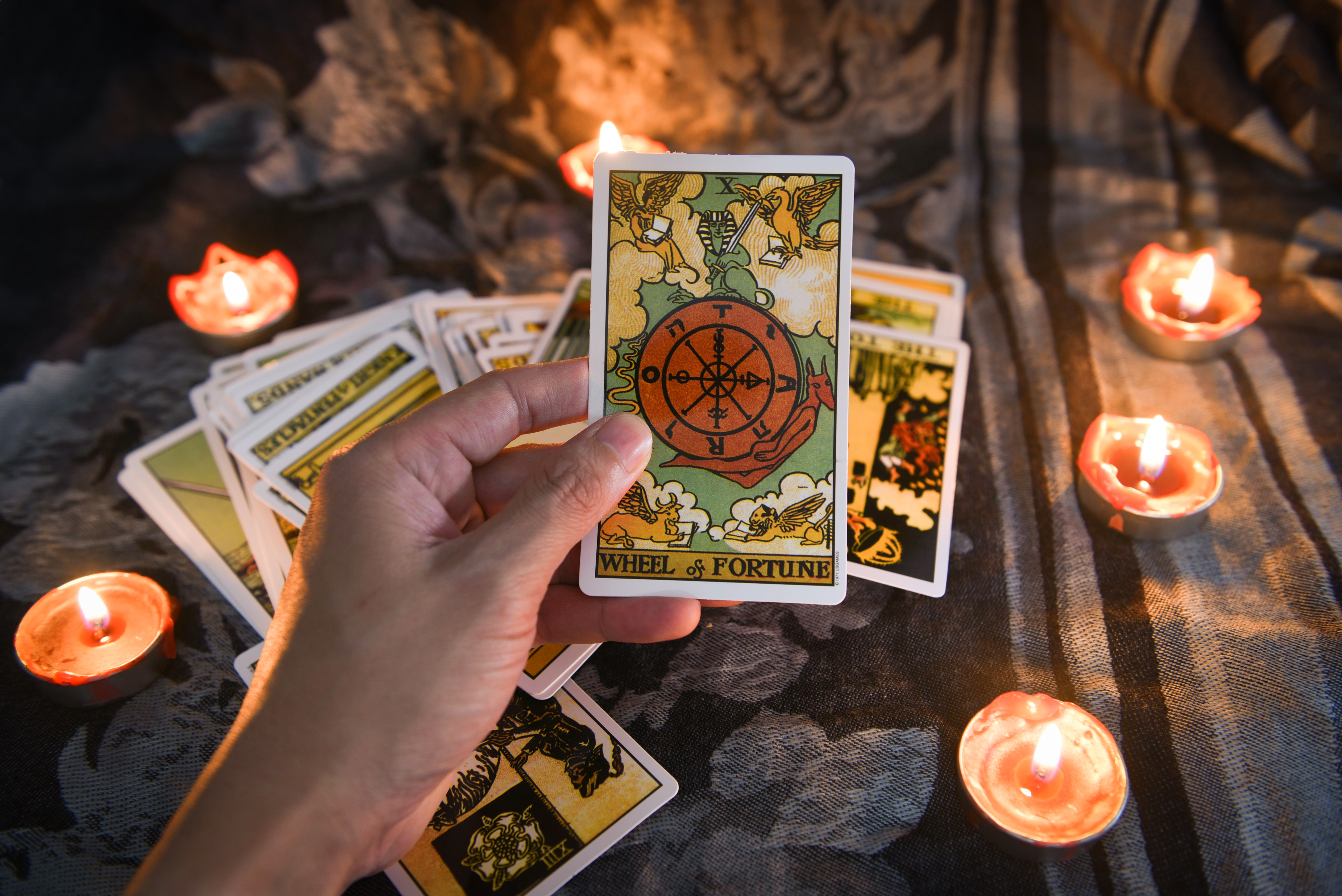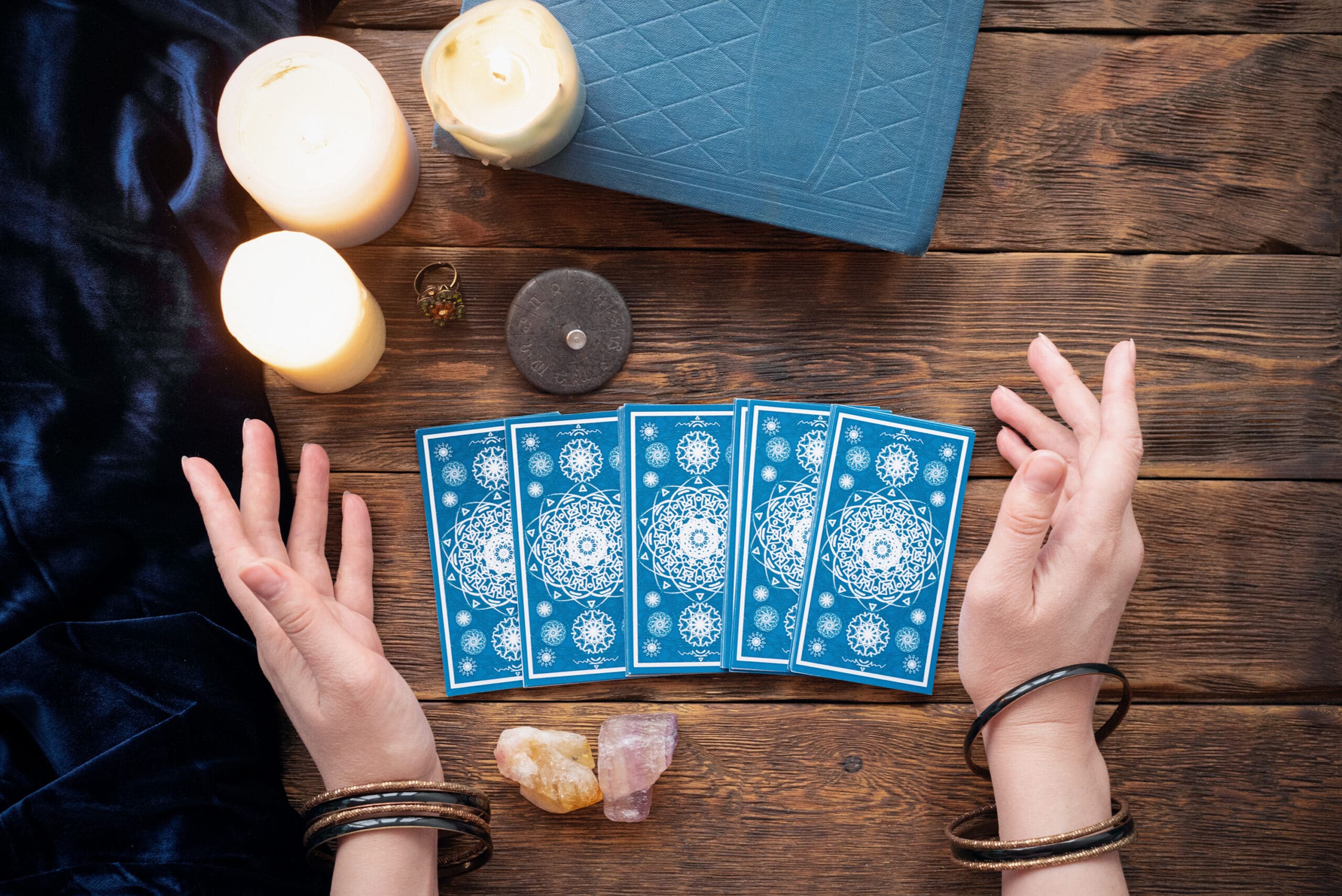It was once associated with a bit of fun at the fairground or a very niche interest in the occult, but now the ancient art of tarot is experiencing a mainstream moment with millennials.
You only have to look at the plethora of crystals on sale at high street shops like Urban Outfitters, the rise of new-age Instagram accounts with thousands of followers like @themoontarot and the popularity of tarot apps like Labyrinthos to know that its popularity is firmly on the up.
Faced with an uncertain economic future and the stresses of lockdown, it’s no wonder that many of us are looking for answers in ancient practices, finding both of a form of therapy and a source of practical advice in holistic wisdom.
Fiongal Greenlaw is a tarot master, psychic and spiritual advisor who has read for hundreds of clients as well as running spiritual events for the likes of Harvey Nichols, through his company The Wellness Foundry (wellnessfoundry.co.uk).
He says tarot came into his life at a point of burnout. “Previously, I worked as a fashion designer for over eight years, heading up design houses in London and overseas. My health, both mental and physical, hit crisis point because of the pressure I was putting on myself.”
This stress reached its lowest ebb when Greenlaw was hospitalised for five days. “My symptoms couldn’t be diagnosed by doctors, nor treated by conventional medicine.”
Desperate to get better, the spiritual guru says he began an alternative journey. Starting with acupuncture, then discovering Reiki and yoga, this led him to further spiritual exploration, landing finally on tarot.
“The relief I felt from these practices was so great, and the transformation was so complete for me, I was driven to share these modalities with others,” he says.
Greenlaw believes that tarot is a source of comfort for millennials because it bring them a deeper sense of meaning. “Partly, I think many people are turning to spirituality and the esoteric because they have come to realise that consumerism is not the answer to happiness, but rather it’s understanding why we’re here and helping others.”
Emily Thornton (@solarsistertarot) is another spiritualist and tarot reader, based in Manchester, who says the majority of her clients are young women in their 20s and 30s. Having lost her mother at the tender age of 26, she experienced a spiritual awakening and was called to help others through the medium of tarot.
“I’m drawn to the practice because I find it incredibly calming, especially when I need to get a little bit more perspective on my situation,” she says.

“I think the millennial generation is looking for answers. It can be disappointing when we feel like we’re not achieving the expectations that were put upon us.”
She adds: “I think that a tarot reading can give young people reassurance, confidence and a fresh outlook to go into that job interview, go on that date or try a new skill with a feeling of empowerment and confidence. It’s like a little voice in your ear saying, ‘You can do this’.”
So what exactly is tarot and what does a reading involve? At its essence, the practice involves using illustrated cards to gain insight into the past, present or future by formulating a question, then drawing and interpreting cards.
Greenlaw says one reason milennials are so drawn to the practice is because it’s very visual in its nature, much like popular social media apps like Instagram and TikTok.

“Tarot differs from other forms of decks as it has 78 cards, divided into the Major and Minor Arcana – ‘Arcana’ meaning secrets,” he explains.
“Each card depicts a different archetype or aspect of life and the soul’s journey. The reader will use the cards as a prompt or reference point to intuit information about the sitter.”
He describes tarot is a diagnostic tool, a bit like an X-ray, which reflects back to you your present circumstance, helping you to move forward by making positive changes.
“Another way I describe it is the Tarot is like a friend who tells you exactly how it is, they might be direct and assertive, but they always have your best interests at heart.”
A reading usually takes around 45 minutes with 10 to 15 minutes at the end for any questions or feedback.
“The first half is more of a ‘stream of conscious’ from the reader, giving you interpretations, guidance and messages around different areas of your life, be it work, finance, love, health,” says Greenlaw.
“There’s nothing for the sitter to do, expect cultivate a sense of calm and receptivity. A reading is an energy exchange, just like a conversation, so if you’re resistant or closed-minded, the reading will not be as effective.”
Unfortunately, a tarot reading can’t solve all of your #lockdown problems overnight, but it can give you a better sense of direction if you’re feeling lost or aimless right now. “A tarot reading will never tell you what to do, but rather how best to do something, what pitfalls and obstacles to avoid, as well as which opportunities and possibilities may have the highest potential,” stresses Greenlaw.
“As the future is never fixed, tarot is not a predictive tool. Although we do look at likely outcomes, this is based on unfolding events and choices available to you.
He continues: “The tarot cannot also undermine your free-will. Therefore, it will not tell you what you should do. Instead, it will offer suggestions that empower you to make positive changes in your life.”

Even if you’re a total sceptic about spirituality, Greenlaw reckons trying a reading can bring benefits for everyone – whether you’re a highly motivated hustle-culture type that’s looking to hit your financial goals or you’ve recently been thrown into an unprecedented period of stress, worry and anxiety.
“A tarot reading can give you a greater clarity in life, helping you make better decisions and reaching your goals quicker,” he says. “You can often recognise overlooked opportunities, or even just get insights into your unhealthy patterns of behaviour.”
Perhaps most crucial of all, Greenlaw says that tarot can give us reassurance and acknowledgement, especially when considering a new direction or decision. With the Office of National Statistics releasing recent figures that suggest rising unemployment rates are hitting young people hardest, a bit of spiritual TLC might be just what the doctor ordered right now.
“Tarot is a wonderful tool to see things from a different angle and offers a lot of self reflection,” adds Thornton. “I like to think of my tarot practice as chatting with a friend; it’s a time where my clients can allow themselves to be completely open and vulnerable.”





